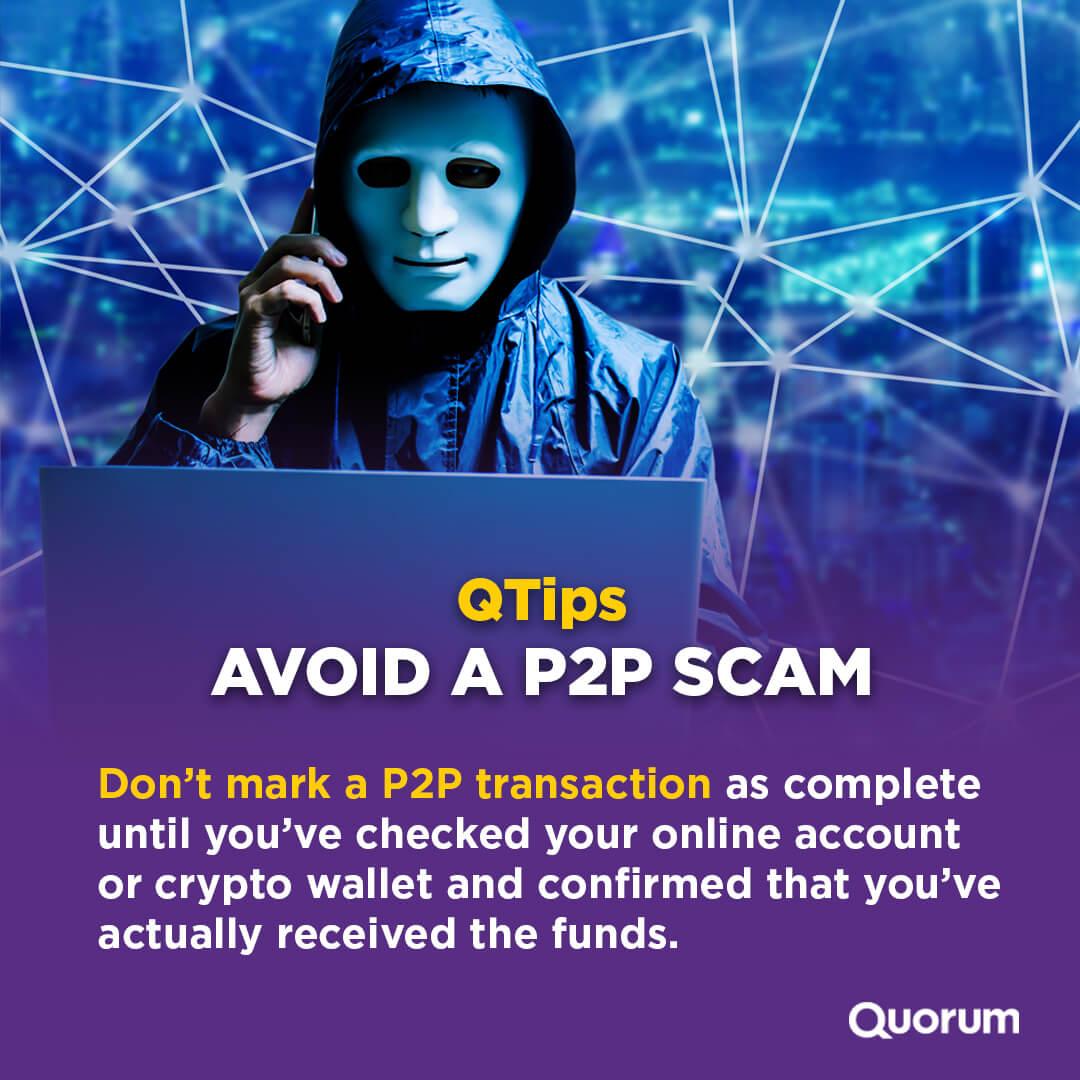P2P (person-to-person) platforms, like Zelle®, Venmo and PayPal, have made life so much easier for many consumers. Paying your friend back for the $20 you borrowed while at the mall, splitting a meal and purchasing a shared gift are now as easy as a few quick screen swipes. Unfortunately, though, P2P scams are rampant and varied. Also, once money is transferred through a P2P service, it’s usually gone for good.
Here are six P2P scams to beware of:
1. Mystery money
In this P2P scam, a stranger “accidentally” sends the target money and then reaches out to them, asking for their money back. The target will see these funds in their P2P account and willingly return the funds. However, because this money was added to the target’s account using a stolen credit card or checking account, the platform will ultimately flag the transaction as fraud and remove the funds. If the victim already forwarded the funds to the scammer, the platform will hold them accountable for the funds and potentially block their account.
2. Hidden credit card fraud
In this P2P scam, a fraudster will purchase an item listed (on Craigslist or a similar site) using a P2P service. They’ll pick up the item, or have it shipped to their home, and they’ll never be heard from again. Meanwhile, the P2P platform will eventually recognize that the funds for the purchase were fraudulently sourced, and will take the money back from the seller. The victim will be left without the item—and have no money to show for it.
3. Fake customer representative
In this scam, a target experiencing difficulty with a transaction on a P2P platform inquires about assistance on social media. A scammer sees that inquiry, and then reaches out to the target, claiming to represent the platform and offering their assistance. If the target falls for the ploy, they’ll be directed to a bogus support site where they’ll be asked to enter their account details or credit card info. This, of course, leaves them open to identity theft and financial loss.
4. Utility scams
Utility scams pulled off via P2P platforms follow the same script as the classic scam in which an alleged rep from a utility company reaches out to a target, claiming their service will be shut off unless a payment is immediately made. In this variation, the scammer insists on payment via a P2P service. Unfortunately, once the payment is made to this “service rep,” it can be impossible to reclaim the funds.
5. Password scam
In this P2P scam, an alleged representative of a credit union or bank will reach out to a target via text, asking if they approve a recent large P2P transfer from their account. The target will respond with a quick “no.” Next, the scammer will call the victim, again posing as a rep of their financial institution, and offer to assist them in reclaiming the allegedly frauded money. To do so, the scammer claims, the victim will need to share their Zelle login credentials. Unfortunately, if the victim shares the one-time passcode, the scammer will have the info they need to change the password and access the victim’s Zelle account. The scammer can now send themselves money through the victim’s Zelle account.
6. Bogus receipts
In this variety of a P2P scam, a scammer will insert themselves into a legitimate P2P transaction by digitally manipulating a screenshot to make it appear as if they have completed a part of an ongoing deal and insisting that you now owe them money. In truth, though, the transaction was never completed and, if you send the money, you’ll be sending it directly to a scammer’s P2P account.

Stay safe
Follow these rules when using P2P platforms:
- Only send and accept funds from people you personally know and trust.
- Always confirm that you’re interacting with the correct person by verifying their phone number at every stage of the P2P transaction process.
- Call the P2P platform’s customer service number directly to resolve errors. Similarly, reach out to your financial institution directly if you receive notification of an allegedly frauded account.
- After completing a P2P transaction, check your checking account to confirm you’ve actually received the promised funds.
P2P services are enormously convenient, but each transaction carries the risk of fraud. Use the tips outlined here to stay safe from P2P scams.







Comments Section
Please note: Comments are not monitored for member servicing inquiries and will not be published. If you have a question or comment about a Quorum product or account, please visit quorumfcu.org to submit a query with our Member Service Team. Thank you.